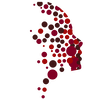Beneficial Dietary and Lifestyle Changes
The following guidelines are advised to assist with managing your reflux while also allowing the affected tissues in the throat to heal/recover from the effects of reflux.
- Exercise
- Watch your Weight - It is important to maintain a healthy weight. This will help all areas of your health and well-being.
- Avoid Fatty and Fried Foods
- Avoid Spicy Foods, Sauces and Condiments
- Avoid Vinegar (Dressings, Pickles, etc)
- Avoid Acidic Foods and Beverages - Anything made with citrus fruits, tomatoes, etc. As well as anything with a red sauce; Spaghetti, Enchiladas, Pizza, etc.
- Avoid Alcohol
- Avoid All Sodas and Carbonated Beverages
- Avoid Caffeine
- Avoid Chocolate
- Do Not Eat Past 7pm
- Do Not Lie Down within 3 hours After Eating
- Elevate the Head of your Bed 6-8 Inches
- Always Take your Medication as Prescribed by your Physician
A printable PDF version of this list can be found here.

